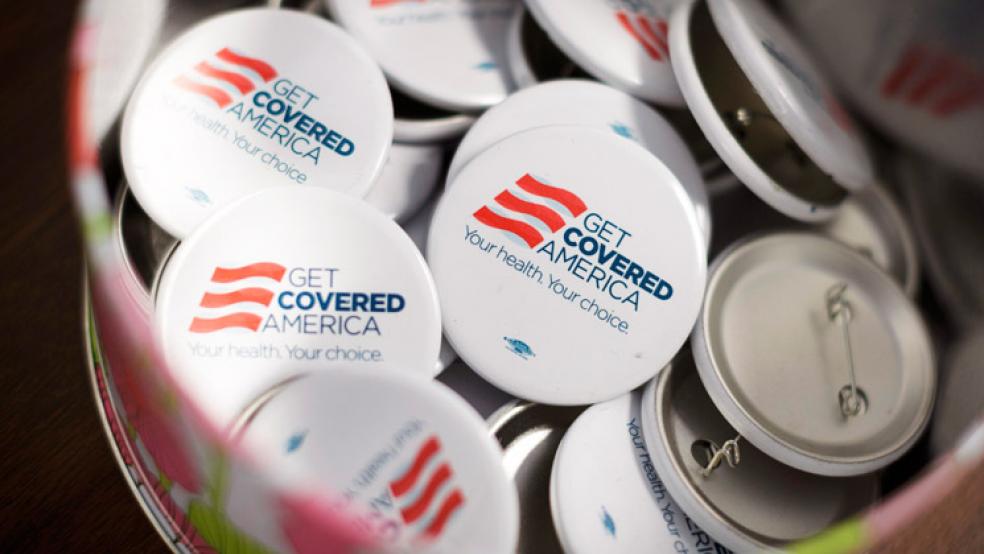Many Americans within Obamacare’s target market—like young or low income Americans—are still largely unaware of the president’s health care law.
According to the Urban Institute’s Health Reform Monitoring Survey, only about a third of all adults have heard either “some or a lot” about Obamacare. Those without insurance and/or below the poverty threshold were even less likely to know about the new law.
Just half of the 7,500 adults surveyed said they have heard about the individual mandate—which requires people to have health coverage by March 31, or pay a tax penalty. Awareness of the mandate was especially low among uninsured Americans, who will be affected most by the provision. According to the survey, 39 percent of the 1,131 people surveyed who are uninsured said they knew about the mandate, compared to 52 percent of insured people.
Likewise, those below the poverty threshold were significantly less likely to be aware of the mandate—38 percent compared to the 54.7 percent of people living above the poverty threshold who said they knew about the law.
Just a quarter say they have heard about the Medicaid expansion to low-income adults—and awareness was even lower among those who fall below the poverty threshold.
Related: Confusion Over Deadlines Jeopardize Obamacare
The survey’s results are troubling for the White House, which has engaged in an “aggressive” outreach campaign for months to get people interested in signing up for health coverage before the deadline—specifically younger and low income Americans living without health coverage.
So far, 3.3 million people have signed up for Obamacare through February. Though it’s unclear how many of those people were previously uninsured. It is also unclear how many people have paid their premiums. One survey of insurers conducted by CNN found that about one in five people hadn’t paid for their policies—bringing the White House even further from its goal.
The Urban Institute found that awareness was even lacking for ACA provisions that have been in place since the law took effect in 2010, including the expansion of dependent coverage to 26 year olds, as well as the elimination of pre-existing condition exclusions.
Related: 10 Top Questions Consumers Ask About Obamacare
Some of the outreach efforts geared at specific groups like Latinos also appears to be falling flat. In California, which has 15 percent of the country’s uninsured population, Latino enrollment is well below targets and only accounts for 20 percent of California's Obamacare enrollees so far, despite hundreds of millions of dollars worth of advertising campaigns tailored to that demographic, According to The New York Times. Similar trends are happing in other states with large Latino populations like Arizona.
Though California state officials say it’s just a problem with outreach, some suggest it may be fears of deportation that keep Latinos from signing up. “Health care clinics and community groups who have worked with Latinos for years say they routinely face skepticism among families who worry that signing up for insurance will attract immigration authorities, who could move to deport family members living here illegally,” Jennifer Medina and Abby Goodnough note in The New York Times.
The Obama administration is also struggling with its outreach to young Americans. According to the Urban Institute, just 25.4 percent young adults in Obamacare’s target population (adults with incomes above 138 percent of the federal poverty level who are either uninsured or who have private non-group coverage) were aware of the health exchanges and just 40 percent knew about the individual mandate.
This is especially problematic for the Obama administration, which has repeatedly stressed the need for a strong mix of young and healthy people to sign up for coverage in order to offset the costs for older, sicker individuals. So far, about 27 percent of all enrollees are between the ages of 18-34—still far below the White House’s 40 percent benchmark.
Administration officials say they expect to see a surge of enrollments ahead of the March 31 deadline.
However, a Bankrate poll shows the majority have no idea what the deadline is to enroll.
Top Reads from The Fiscal Times:
- 11 GOP Attorneys General Say Obamacare Fix Is Illegal
- The Hidden Impact of Obamacare and the Economy
- The Unintended Consequence of Expanding Medicaid





